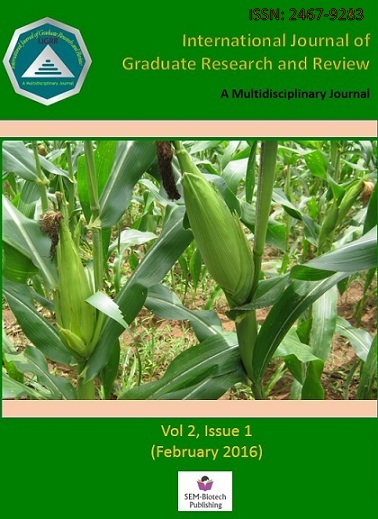






Effects of Disinfectants on Microbial Load of Keyboard and Mouse
Shakya Aaisha1, Acharya Aastha1, Timalsina Aashish1, Khanal Amit1 and Jeena Amatya1*
1Department of Microbiology, St. Xavier’s College, Maitighar, Kathmandu, Nepal
Shakya Aaisha1, Acharya Aastha1, Timalsina Aashish1, Khanal Amit1 and Jeena Amatya1*
1Department of Microbiology, St. Xavier’s College, Maitighar, Kathmandu, Nepal
Abstract
With the advent use of electronic appliances, the number of computer keyboards and computer mice in use in daily life are increasing. The hands of users are believed to be the main vector for transfer of pathogens in this devices. Disinfectants which are easily accessible and that which have fewer side effects are found to lower the microbial load to some extent. This work systematically investigated the occurrence of a variety of microorganisms on keyboard and mouse. We hypothesized that a variety of bacteria would be isolated from the items and that the various disinfectants such as ethanol and phenolic compounds (Lysol) should eliminate the microorganisms. Similarly, in this study, we investigated the number and nature of contaminating microorganisms on the keyboards and mouse of different locations. Disinfectant-tests to the isolated and identified organisms were done via the phenol coefficient tests where the disinfectants to be used were diluted before. Afore implementing these disinfectants, the microbial load was tallied with the McFarland’s broth with the help of colorimeter. Among the six swab samples of keyboards from various locations, the library keyboard had the largest count followed by Classroom2, Classroom 1, Classroom 3, Computer #12 and House. Library mouse, on average, held the largest count followed by Classroom 2, Classroom 3, Computer #12, Classroom 1 and House. The comparative efficacies of the disinfectants were obtained by the two-way ANOVA test. With the calculation from phenol coefficient test, phenol was found to be the most effective
Keywords: Keyboard; Mouse; Disinfectant; Phenol Coefficient Test; Colorimeter; Two Way Anova
With the advent use of electronic appliances, the number of computer keyboards and computer mice in use in daily life are increasing. The hands of users are believed to be the main vector for transfer of pathogens in this devices. Disinfectants which are easily accessible and that which have fewer side effects are found to lower the microbial load to some extent. This work systematically investigated the occurrence of a variety of microorganisms on keyboard and mouse. We hypothesized that a variety of bacteria would be isolated from the items and that the various disinfectants such as ethanol and phenolic compounds (Lysol) should eliminate the microorganisms. Similarly, in this study, we investigated the number and nature of contaminating microorganisms on the keyboards and mouse of different locations. Disinfectant-tests to the isolated and identified organisms were done via the phenol coefficient tests where the disinfectants to be used were diluted before. Afore implementing these disinfectants, the microbial load was tallied with the McFarland’s broth with the help of colorimeter. Among the six swab samples of keyboards from various locations, the library keyboard had the largest count followed by Classroom2, Classroom 1, Classroom 3, Computer #12 and House. Library mouse, on average, held the largest count followed by Classroom 2, Classroom 3, Computer #12, Classroom 1 and House. The comparative efficacies of the disinfectants were obtained by the two-way ANOVA test. With the calculation from phenol coefficient test, phenol was found to be the most effective
Keywords: Keyboard; Mouse; Disinfectant; Phenol Coefficient Test; Colorimeter; Two Way Anova
Int. J. Grad. Res. Rev. Vol-4, Issue-1: 3-10


